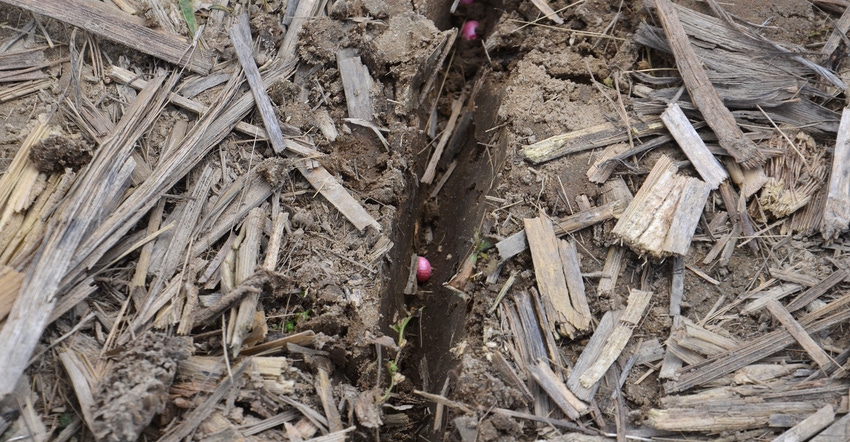
Why is an entomologist interested in slugs? After all, they’re a mollusk, not an insect.
“We observed them while looking for potential insect problems in cereal rye cover crop fields,” says Nick Seiter, Extension entomologist at the University of Illinois. He shared his observations at the recent Indiana CCA conference.
In both 2019 and 2020, Seiter and his team looked for insect issues in fields with and without cereal rye cover crops. The first year they observed only soybean fields. In 2020, they followed a set of both soybean and corn fields.
“We basically didn’t find any economic difference in insect issues between fields with and without cover crops in either year,” he reports. “There may be more insects, and you need to scout. But just because there are more insects doesn’t mean there will be an economic impact. You will also likely find an increase in beneficial insects, especially ground beetles.”
Slug issues
Seiter says that there may also be increased odds for finding slugs. However, saying slugs are there because of a cover crop in the field isn’t a fair observation. “It’s trickier than that and not that clear-cut,” Seiter says. “In 2019, we found slugs in a cover crop field, but we also found them in a field without cover crops. They seem more tied to tillage system and weather conditions than anything else.”
Slugs like warm, wet weather best, he observes. However, you stand an increased chance of seeing them in a cool, wet spring. If that sounds counterintuitive, here’s why: “When it’s cool and wet, young plants are growing slower,” Seiter says. “Slugs have more time to feed on them while they’re small than if it’s warm and plants are growing faster.”
If a cover crop is burned down, forming a mat of residue, and it turns wet, slugs may hide under the residue. They can also hide under previous crop residue in a no-till field.
The main risk with slugs in soybeans is stand loss, Seiter says. They can chew through cotyledons and leaves. And if the seed trench didn’t close, they can slip into it and work their way down the row, feeding on soybeans, interfering with germination and reducing the stand potential.
Normally, once temperatures warm up, slugs stop feeding and move deeper into the soil. However, in two of the past four years in Indiana, it stayed cool enough in some areas that slugs were found in some soybean fields as late as the last week of June, says Steve Gauck, a regional agronomy manager for Beck’s, based near Greensburg, Ind. However, at that point, they were no longer causing stand loss.
Control issues
Since they are small animals, mollusks, and not insects, insecticides aren’t effective, Seiter says. Baits, such as Deadline, are labeled in Indiana, but not Illinois. Even where labeled, baits can be expensive.
“The best advice is to do a good job of residue management, and plant when it’s dry if possible,” Seiter says. “You want to avoid planting into cool, wet soils if you can.
“You certainly want to avoid leaving an open seed trench. It’s problematic for several reasons. It’s also an open invitation to slugs if they’re in the field.”
About the Author(s)
You May Also Like




